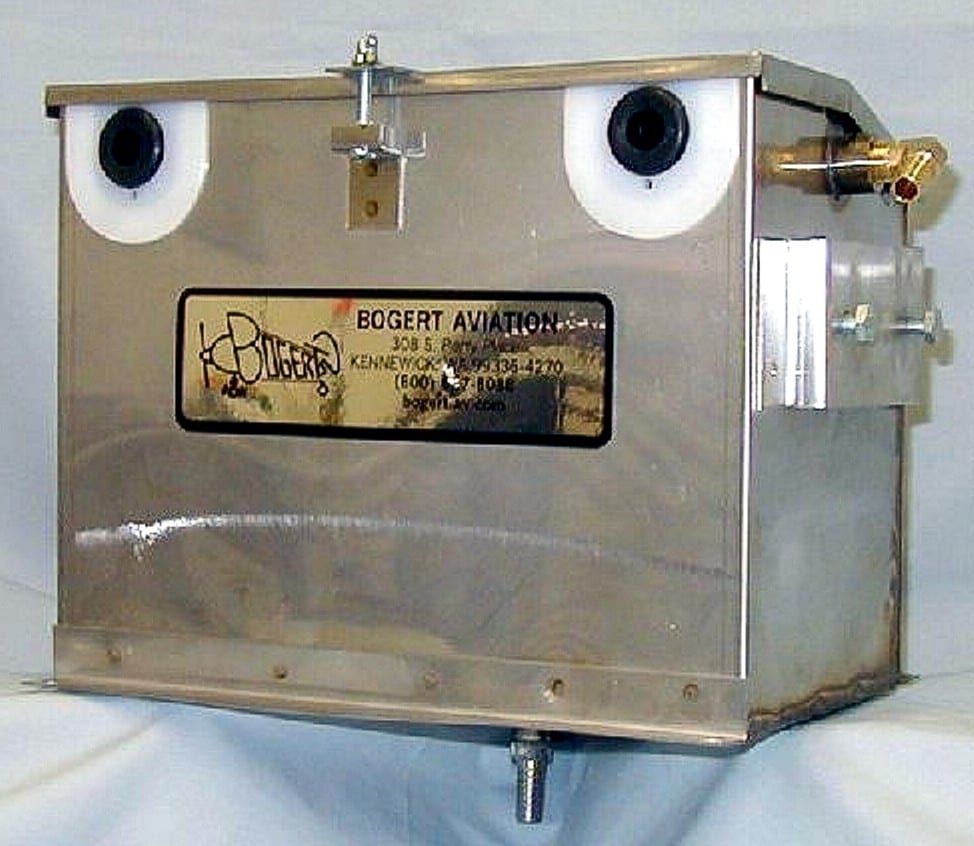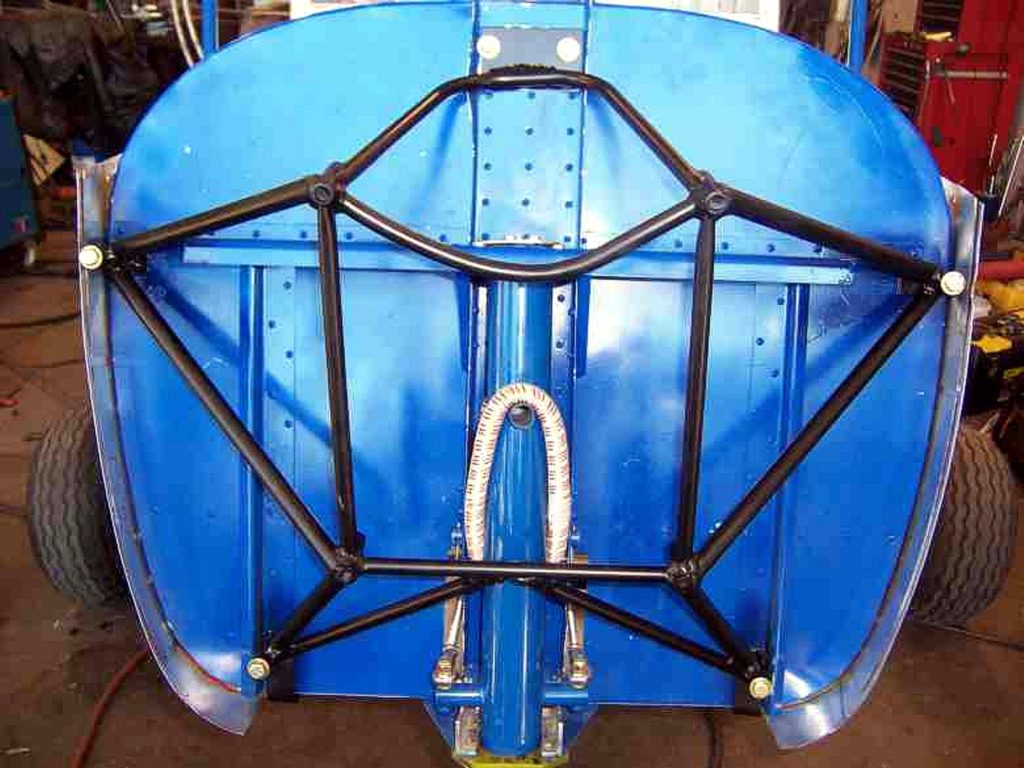Aircraft parts are expensive, so we really should be repairing rather than replacing them whenever possible.
When the co-owner of a 1976 Cessna 172M emailed me, she had just come from talking to her mechanic and was clearly in a state of sticker shock:
“Where can I locate a used battery box for my Skyhawk without having to rob a bank? Our Gill battery (that has constantly leaked from shortly after we bought it) has caused corrosion that cannot be repaired, so we are told. Our plane is down for its annual, and apparently will remain unairworthy until this issue is resolved to the FAA’s standards.
“In the past, we’ve used acid-proof paint to protect the aluminum box, and pads to soak up any leakage, but the problem has now become severe enough that the A&P says we have to replace the whole box. I thought our current one could be repaired, but according to the mechanic the bottom of the box has the stamp on it that makes it legal, and that area is damaged and needs to be replaced.
“New boxes from Cessna are nearly $1,000, which we find totally ridiculous and unacceptable. What can we do? Are there any alternatives? I’m so upset about this that I’m ready to sell our lovely plane and eliminate the letters FAA from my alphabet.”
It infuriates me when mechanics give this sort of advice to owners. There is absolutely no reason on earth that the existing battery box can’t be repaired. There’s no FAA rule that says the box needs some magic stamp to be legal. (It might need a magic stamp to be legal to SELL, but not to USE. Big difference!)
Minor repair
Repairing the battery box is a “minor repair” and can be done by any A&P mechanic using standard sheet metal repair techniques. Those techniques are thoroughly documented in “the A&P mechanic’s bible,” FAA Advisory Circular AC 43.13-1B (Acceptable Methods, Techniques, and Practices—Aircraft Inspection and Repair). The resulting repair requires nothing more than a simple logbook entry. In short, it’s no big deal.
The FARs classify aircraft repairs as being either “major” or “minor.” These terms are defined in FAR §1.1 as follows:
Major repair means a repair:
- That, if improperly done, might appreciably affect weight, balance [limits], structural strength, performance, powerplant operation, flight characteristics, or other qualities affecting airworthiness; or
- That is not done according to accepted practices or cannot be done by elementary operations.
Minor repair means a repair other than a major repair.
In addition, FAR Part 43 Appendix A lists numerous examples of repairs that the FAA considers to be major repairs. It is not an exhaustive list, but provides helpful guidance in understanding how the FAA interprets the aforementioned definitions.
A major repair is one that the FAA wants to know about. It must be done in accordance with “approved data” that has been officially blessed by an authorized representative of the Administrator (typically an FAA engineer, inspector, or designated engineering representative). It must be inspected and approved by an IA, and it must be documented on an FAA Form 337 (record of major repair or alteration) and filed with the FAA Records Branch in Oklahoma City, where it becomes a permanent part of the aircraft’s official records.
In contrast, a minor repair is one that the FAA considers sufficiently inconsequential that it doesn’t want to know about it. It does not require approved data, an IA’s involvement, or a Form 337. It may be performed by any A&P mechanic, and documented with a simple logbook entry.
A minor repair may be done in accordance with “acceptable data,” which simply means materials, methods, and techniques that meet FAA certification standards and conforms with accepted industry practices. Acceptable data includes (but is not limited to) FAA Advisory Circulars; manufacturer’s maintenance manuals, service bulletins and service kits; and military specifications (mil-specs) and technical manuals. Unlike approved data, acceptable data does NOT require FAA approval.
The determination of whether a particular repair is major of minor is made by the mechanic who is performing the repair, using FAR 1.1 and Part 43 Appendix A as guidance. In making this determination, the mechanic is essentially deciding whether the repair is “above his pay grade” and requires the FAA and an IA to get involved.

The overwhelming majority of aircraft repairs are minor repairs. Without question, repairing an aluminum battery box is a minor repair.
Of course, the Skyhawk owner may well have had other options as well. It’s very likely that a PMA-approved battery box is available from a third-party source at a price substantially less than what Cessna charges. It’s also quite likely that a used but serviceable battery box can be obtained from a salvage yard. All of these are legal alternatives to Cessna’s high-priced spread.
Owner-produced part
Here’s yet another option: Even if the Skyhawk’s battery box was on the verge of crumbling into primeval aluminum oxide dust and was totally unrepairable, it would still be perfectly legal for the aircraft owner to produce one from scratch (using the original as a template and using the same dimensions and materials), and document it in the logbooks as an “owner-produced part” in accordance with FAR §21.303(b)(4). In doing this, the owner could enlist the aid of his A&P, a machine shop, or anyone else he likes and it would still qualify as an owner-produced part.
It’s an oddity of the FARs that mechanics may repair broken parts, but they have no authority to produce new parts from scratch. However, the FARs explicitly grant that authority to aircraft owners, so long as the parts they produce are for installation on their own aircraft and not for sale or for installation on an aircraft they do not own. (The FAA authorizes owners to produce parts for their own certified aircraft because if they didn’t, “orphaned” aircraft whose manufacturers no longer exist might wind up grounded forever.)
The owner need not actually make the part with his own two hands. The FAA will consider a part to be owner-produced if the owner is meaningfully involved in its production in any of the following ways:
- Provides the specifications or the part to be duplicated;
- Provides the materials to make the part;
- Provides manufacturing techniques or assembly methods;
- Provides quality assurance; or
- Supervises the manufacture of the part.
The only catch is that to be legal, an owner-produced part has to be airworthy. For a part to be airworthy, it must conform to the aircraft’s type design. Therefore, if you decide to fabricate a battery box for your Skyhawk, you must duplicate the original battery box as closely as humanly possible, using the same dimensions, materials and construction methods used in the original. Resist the urge to make it better than the original, because then it would legally become an “alteration” rather than a “repair.”
You’ll usually need help in fabricating an owner-produced part, and the most likely person to ask to help you is your A&P. That’s because the owner-produced part won’t do you much good unless your A&P is satisfied that it is airworthy and is willing to install it and approve your aircraft for return to service. The best way to ensure you A&P is satisfied that the part is airworthy is to get him involved in its production. In fact, your mechanic can legally manufacture the owner-produced part for you provided you supervise his work!
Major repair
If the repair you need is a major repair, things get a bit more complicated…but only a bit. Another war story may be instructive here. It involves a Cirrus SR22 that was undergoing its annual inspection at an authorized Cirrus Service Center. The inspecting mechanic discovered some light corrosion on the aircraft’s welded steel tubing engine mount, caused by an exhaust leak.
The mechanic informed the Cirrus owner that repair of an engine mount is a major repair that require approved data. (The mechanic was correct: Engine mount repair is listed as a major repair in Part 43 Appendix A.) He advised the owner that it would be necessary to obtain an Engineering Order (EO) from Cirrus Design Corporation for the repair, and that Cirrus had quoted an engineering fee of $2,000 to prepare the EO—that was just for the paperwork, and did not include parts or labor for the repair itself!
Needless to say, the Cirrus owner was not amused, so he contacted me for advice. I counseled him that although an engine mount repair is indeed a major repair, there was no need to pay Cirrus for an EO because the FAA has already provided approved data for performing such a repair in the mechanic’s bible (AC 43.13-1B). The signature page of this Advisory Circular states, in pertinent part:
The repair data [in AC 43.13-1B] may also be used as approved data, and the AC chapter, page, and paragraph listed in block 8 of FAA form 337 when:
- a. the user has determined that it is appropriate to the product being repaired;
- b. it is directly applicable to the repair being made; and
- c. it is not contrary to manufacturer’s data.
Furthermore, AC 43.13-1B states that if the corrosion is sufficiently minor that it can be removed without reducing the tubing wall thickness by more than 10%, no further repair is necessary other than priming and painting.

The owner approached his Service Center with this information, but they would not budge, and continued to insist that they could not repair the engine mount without an EO from Cirrus. I counseled the owner to find another A&P not associated with the Service Center and ask him to look at the corroded mount. The owner did that, and the independent mechanic confirmed my suspicion that the corrosion was so minor that it could simply be removed with ScotchBrite and elbow grease, then primed and painted without requiring any structural reinforcement.
On my advice, the owner then instructed the Service Center to finish up the annual but without addressing the engine mount corrosion, and to sign off the annual with a discrepancy. The owner then proceeded to taxi his aircraft to the other A&P’s shop, where the corrosion was treated and the aircraft approved for return to service at a total cost of just a couple of hundred bucks.
It really bugs me how much “defensive maintenance” goes on these days by shops and mechanics who are more interested in limiting their liability than in doing what’s right and reasonable for their aircraft owner customers. There’s no reason for aircraft owners to put up this. The next time an A&P tells you that you have to do something expensive because FAA regulations require it, you might consider doing what the Skyhawk and Cirrus owners did: get a second opinion.
You bought a plane to fly it, not stress over maintenance.
At Savvy Aviation, we believe you shouldn’t have to navigate the complexities of aircraft maintenance alone. And you definitely shouldn’t be surprised when your shop’s invoice arrives.
Savvy Aviation isn’t a maintenance shop – we empower you with the knowledge and expert consultation you need to be in control of your own maintenance events – so your shop takes directives (not gives them). Whatever your maintenance needs, Savvy has a perfect plan for you: